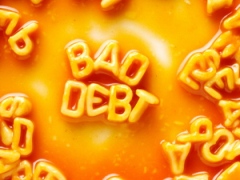Bank bad debt ratio could be 10pct
Bank bad debt ratio could be 10pct
Experts believe that the bad debt ratio of the whole banking system by the second quarter of 2012 would be much higher than 8.6 percent, the figure released by the State Bank of Vietnam by March 31, 2012. The national economy remains pale, because of which businesses still cannot sell products to get money to pay bank debts.

The reports released by six commercial banks all shown that their bad debts have increased sharply over the beginning of the year. Vietcombank, one of the biggest commercial banks in Vietnam, and Navibank saw the bad debts rising by nearly four percent.
Vietcombank’s bad debt ratio jumped from 2.03 percent at January 1, 2012, to 3.47 percent by the end of the second quarter. Meanwhile, the figures of Vietinbank are 0.74 percent and 2.45 percent, respectively. The fifth-group debts (the most risky group) have increased by two trillion dong.
As for Navibank, the bad debt had reached 511 billion dong by June 30, while 45 percent of which, or 231 billion dong, may be irrecoverable.
Meanwhile, according to the State Bank of Vietnam, the fifth group debts of the whole banking system had amounted to 40 percent of the total bad debts (117.7 trillion dong).
Analysts have commented that bigger banks tend to lend more than small ones, therefore, their bad debt ratios would be higher than that of small banks. That explains why the two big guys Vietcombank and Vietinbank have the bad debts increasing so rapidly.
Commenting about the 3 percent bad debt ratio of Vietinbank and 4 percent of Vietcombank, Bui Kien Thanh, a well-known economist, said the bad debt ratio of approximately is really worrying for such a big state owned bank (Vietcombank has been equitised to operate as a joint stock bank. However, since the state is still holding controlling stakes in the bank, Vietcombank is still referred to as a state owned bank).
However, Thanh has predicted that the high bad debt ratio has not been caused by the mismanagement, but because the banks had to provide loans to some subjects as per the request by the government.
Dr Le Xuan Nghia, former deputy Chair of the National Financial Supervision Council, said it is unfair to blame the high bad debt ratio on the bank’s poor performance. He said that in the current economic conditions, a lot of businesses went bankrupted or stopped operation, thus leaving unpaid debts.
“The bad debt ratio would be increasing even more rapidly in the time to come,” Nghia has warned.
Deputy general director of Asia Commercial Bank Nguyen Thanh Toai also said that the bad debt ratio increases prove to be inevitable in the context of the economic downturn.
ACB’s bad debt ratio has increased from 0.85 percent to 1.53 percent over the last six months, even though ACB said it does not have bad debts in the real estate and securities sectors like other banks.
Especially, the senior executive of the bank has revealed that most of the bad debts are being incurred by production enterprises, including many big corporations.
Meanwhile, Thanh has warned that the figures about bad debts reported by commercial banks may not truly reflect the real situation. “Some banks might not have reported their actual bad debt ratios, because they do not want to make provisions against the bad debts which would lead to the decrease of their profits,” Thanh said.
“The actual bad debt ratios could be even higher than the figures which have been made public,” he added.
VnExpress

























